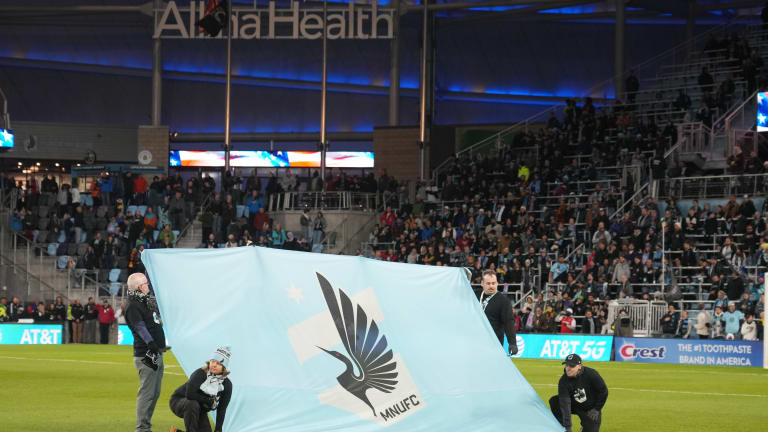
Minnesota United ranked the 41st most valuable soccer team in the world, but how?

Manchester United, Real Madrid, Barcelona, Liverpool ... Minnesota United?
When it comes to global soccer powers, teams from MLS don't normally get thrown around, let alone teams that started playing in the top league in their country only seven years ago.
According to Sportico, Minnesota United are the 41st most valuable soccer club in the world in 2023. At No. 41, MNUFC are listed as the 13th most valuable club in MLS and ahead of England's Leicester City (2015 Premier League Champions) and Spain's Sevilla (perennial contenders for European trophies).
So what makes Minnesota United – which, remember, only entered Major League Soccer in 2017 – and other MLS teams so valuable off the field?
Scarcity.
Sportico says scarcity is a big driver in MLS franchise values sky-rocketing. Leagues around the globe have the threat of relegation, meaning if they suck and finish at or near the bottom of their league, they get booted to a lower league and new teams come up to replace them. In MLS there are currently 29 teams, and they'll remain the only 29 in the league as promotion and relegation does not exist.
MLS will continue to expand, with a 30th team reported to be announced later this year, but they'll never relegate any of the teams out of the league.
"MLS has fed off this scarcity to attract investors at a lower price point than the multibillion-dollar outlays required in the NFL and NBA. The prize is a franchise in the world’s most popular sport and its biggest economy without the threat of relegation hanging over your head."
Take Everton for example, listed as the 34th most valuable soccer club in Sportico's list. Historically, Everton are a mid-to-lower table team in the Premier League and are generally secure in the world's most profitable sports league. If the season were to end today though, Everton would be relegated and have their estimated $600 million value halved because the finances of the English Championship division are significantly worse than those of the Premier League, which rakes in billions each year in TV revenue alone.
So, why then are Minnesota ahead of more established MLS brands like the Columbus Crew, Philadelphia Union, Chicago Fire, and New York Red Bulls?
A mixture of better media market (Columbus), stadium (Chicago), and location within their metro areas (Philadelphia and Red Bulls).
- The Loons play in the 15th biggest media market according to the latest Nielson rankings while Columbus sit in the 32nd.
- The Chicago Fire moved into Soldier Field (capacity: 61,000) in 2022 but the Fire are struggling to fill 10,000 seats for home games. Meanwhile, MNUFC are filling out 19,000 seat Allianz Field every home game.
- Philadelphia and New York sound like prime markets for soccer but their stadiums are 30 minutes (on a good day) from their downtowns, while Allianz Field is right in between Minneapolis and St. Paul, and easily accessible via public transportation.
A new global TV deal with Apple and the U.S. co-hosting the 2026 World Cup has also helped see MLS franchises values rise, according to the publication.
Another factor in MNUFC's and MLS' favor, is the salary cap that's synonymous with American sports.
Global soccer is more like baseball in that clubs can pay whatever they can afford to players to fill out their roster, there is no salary cap arbitrarily keeping player wages down. MLS has a limited salary cap that teams have to remain in, designed to help control costs for clubs that still struggle to turn a profit, which is most MLS teams
"In the future, we have to seriously think about a salary cap," Aleksander Čeferin, the President of UEFA (European club soccer's governing body), said last week on the Men in Blazers podcast. "If the budgets go sky-high then our competitive balance is a problem.”







